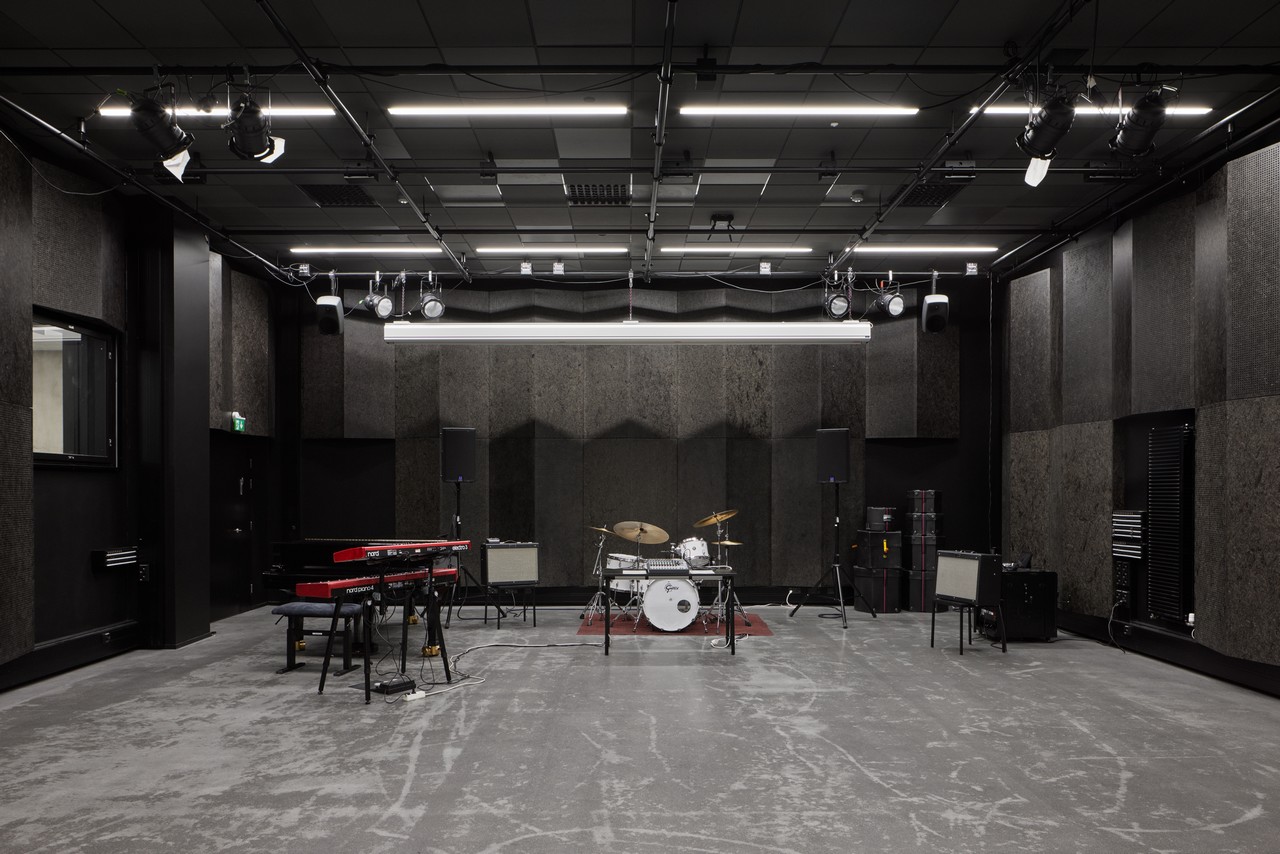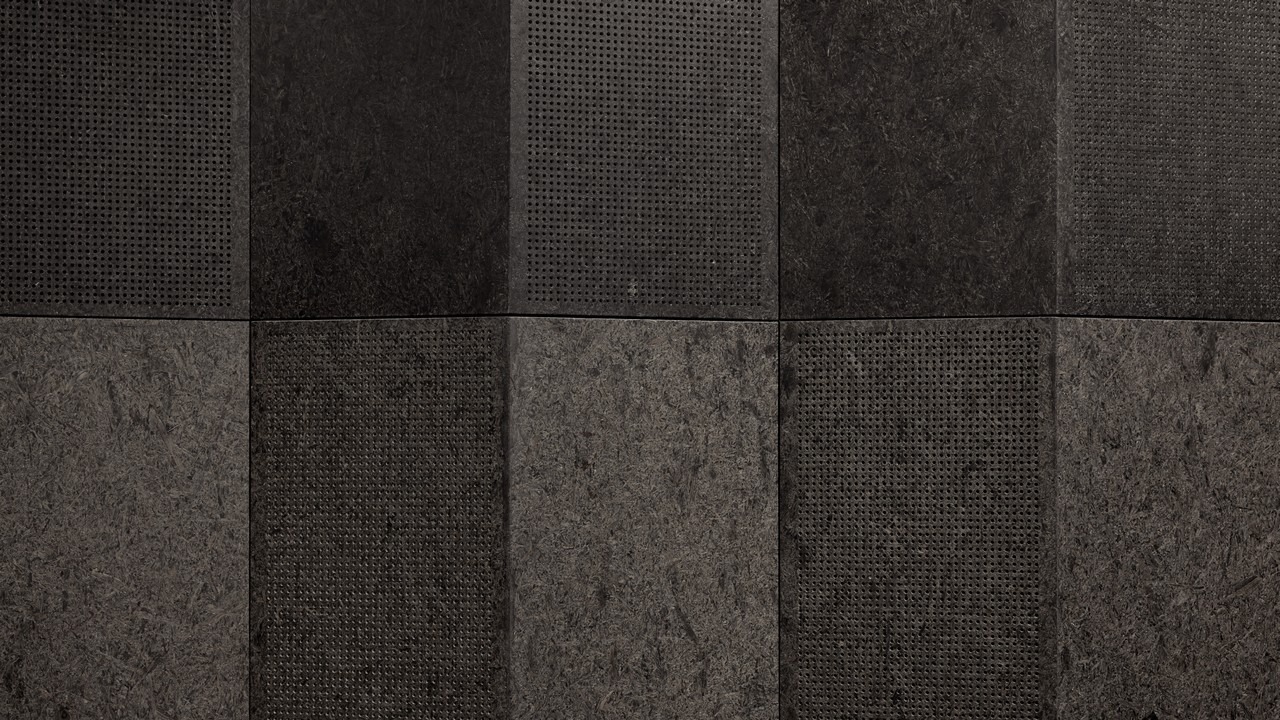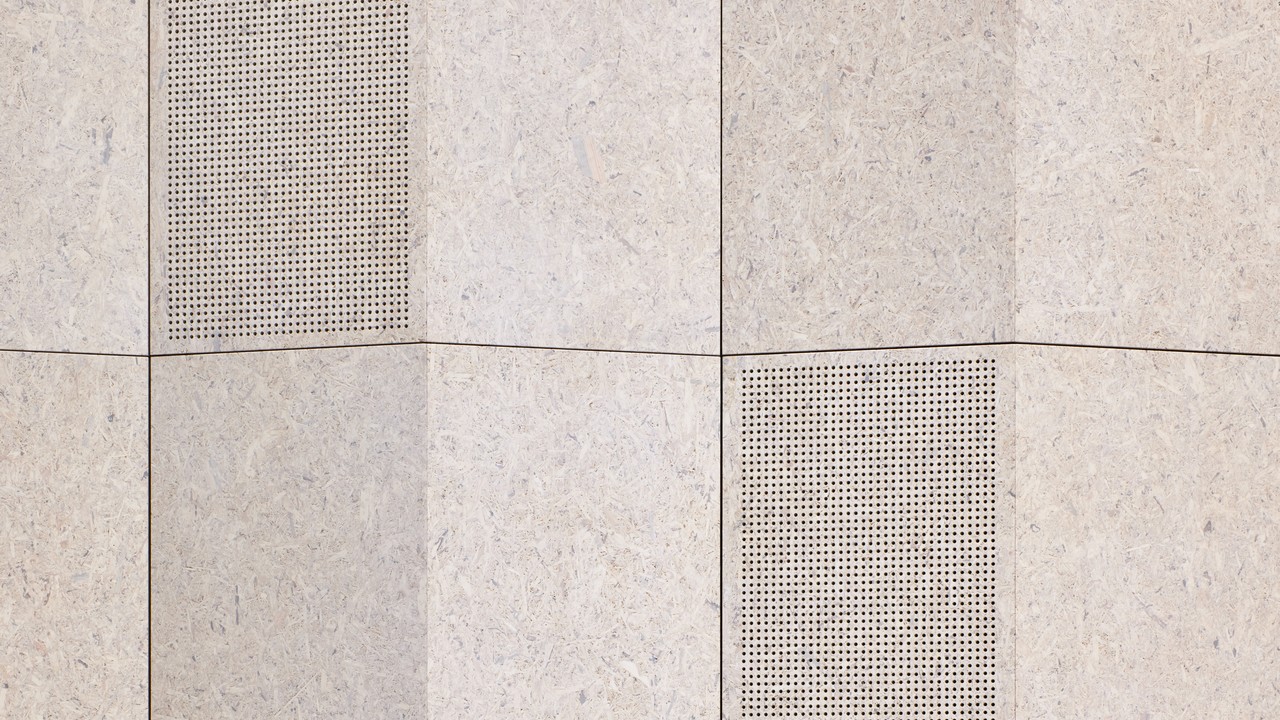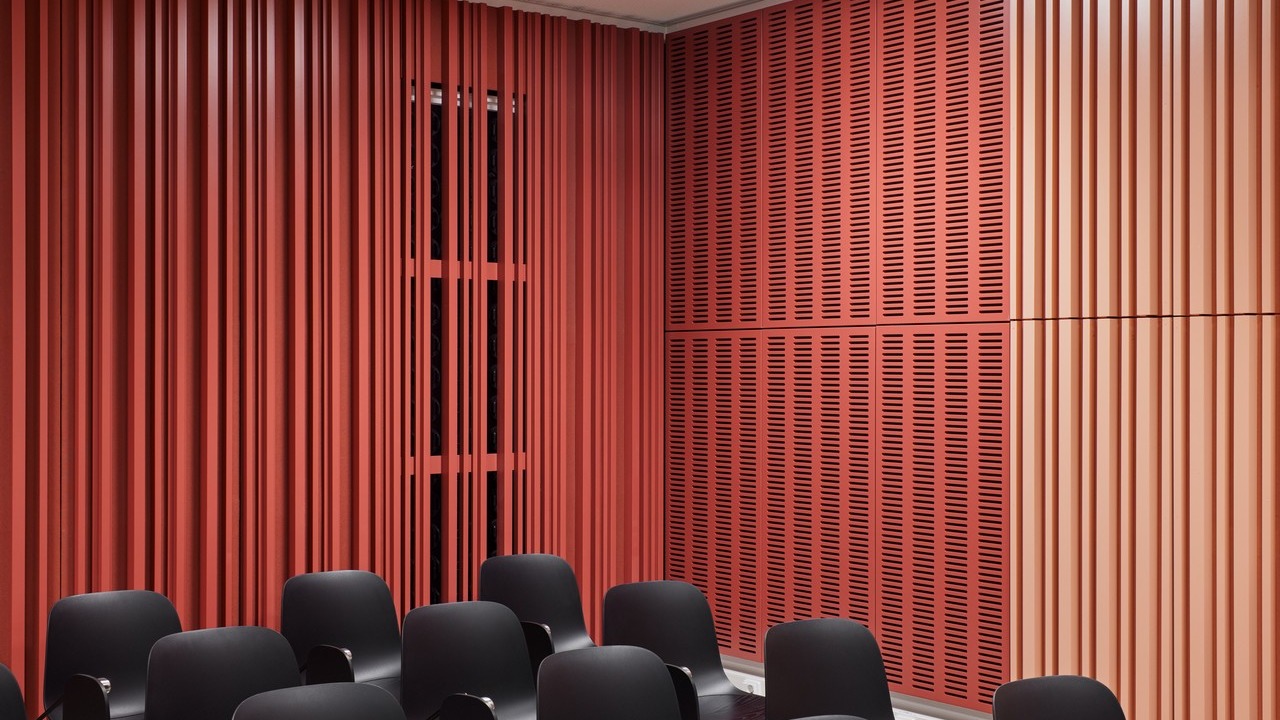Soiva, located in the Arabia135 block, is a building designed for joint use by the Metropolia University of Applied Sciences and the Pop & Jazz Conservatory, bringing together a variety of musicians, enthusiasts, and students under one roof in spaces that are both stunning in appearance and functionally polished to the last detail.
Soiva is a modern and creative building. The creative design and implementation is inspired by a range of factors including openness, community, safety, and functionality. The Soiva project was designed by Miia-Liina Tommila (project manager), Yrjänä Vuojala (principal designer), Hanna-Maria Virtanen (project architect), and Lauri Suuronen (interior cladding) from the architectural firm Arkkitehdit Tommila.
Challenging solutions requiring product development
Soiva's three music practice halls, designed for different purposes, have interior cladding panels manufactured by Puucomp: black and white stained OSB panels with acoustic perforation. The eight rooms of the recording studio in the basement of the campus are equipped with ArborLine lath elements with different coloured background fabrics.
The functional requirements of the rooms were very challenging, as the acoustics in both the halls and the studios had to be exactly right. Finding the right materials was particularly challenging.
Soiva was made with music education and users of the facilities in mind."
The demanding acoustic properties were by no means the only requirement. In addition, the owner of the building imposed the need to use M1 class materials. And as it is a public building, fire safety must also meet the requirements for public buildings, i.e. at least class B-s1,d0. The materials also had to create the look and feel of the design and requirements. There were therefore many demands on the products.
There were no ready-made products to meet the requirements, so product development work had to be carried out to ensure that both functional and aesthetic requirements were met as well as possible. Puucomp was chosen as the material supplier not only because of its suitable material options but also because of its flexible production, high level of cooperation, and product development-oriented approach. A sample of OSB was ordered with the desired characteristics.
"The sample arrived quickly and looked good. The model gave really good confidence that this solution could be taken forward. The sample also went through a thorough evaluation by the acoustician," says Lauri Suuronen, who designed the interior cladding.
The details, structure, and models were subsequently discussed at a joint table between Puucomp's architect service and the parties involved, and the end result met the requirements and wishes.
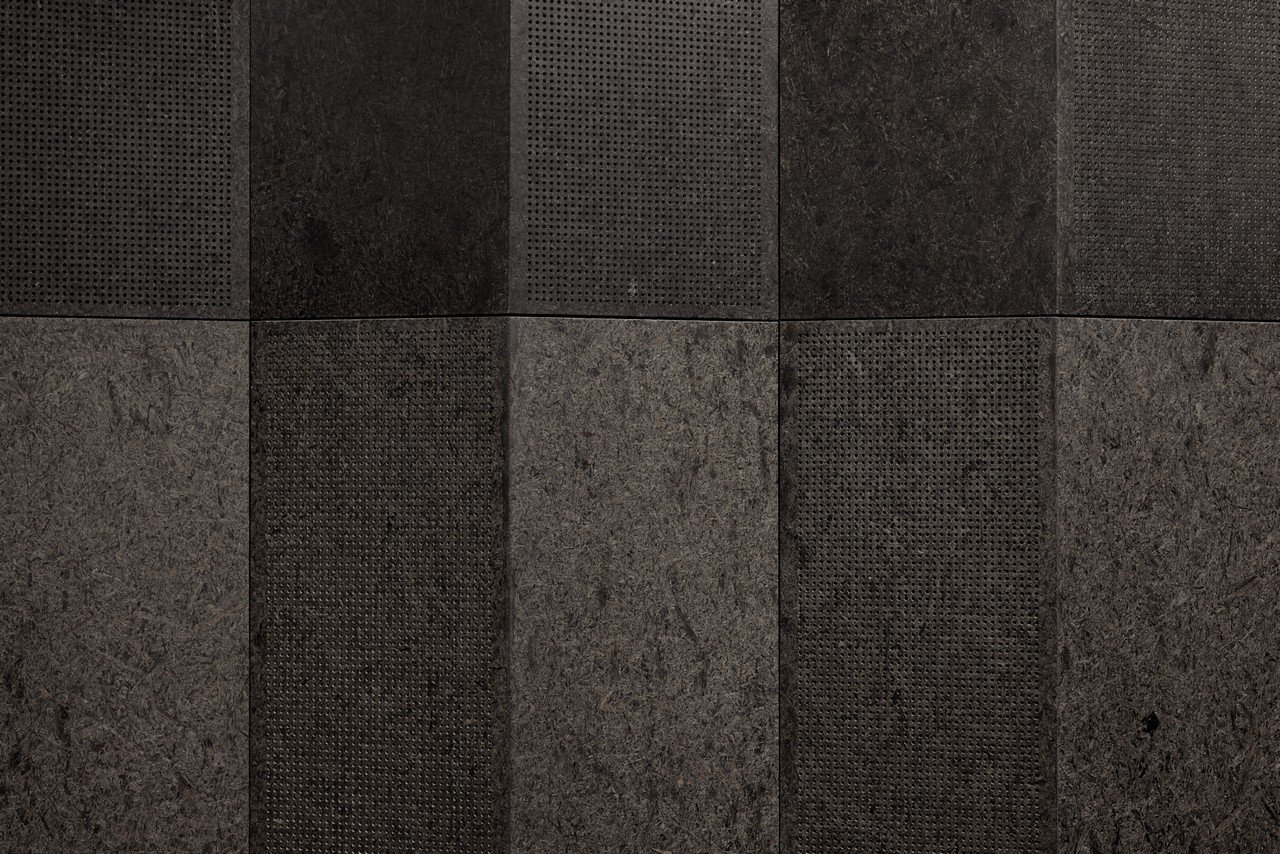
The OSB solution is tailor-made for the site, as no off-the-shelf solution was available.
The acoustic, fire-resistant, and M1-rated OSB panels were delivered to Soiva in prefabricated form, meaning they could be easily lifted into place on site. The panels can also be easily removed and accessed if the building services hidden behind the panels need servicing.
“Rough enough for blues”
Soiva is made with music education and users of the facilities in mind - both technically and in terms of comfort. A certain rough feel was sought for the campus spaces, with the aim of avoiding overly dominant cleanliness.
"The idea behind it was the phrase 'Rough enough for blues'. Although the building has plenty of multi-purpose and neutral spaces, we wanted to avoid being too clinical. However, the user base is made up of budding musicians and creative people," says project architect Hanna-Maria Virtanen.
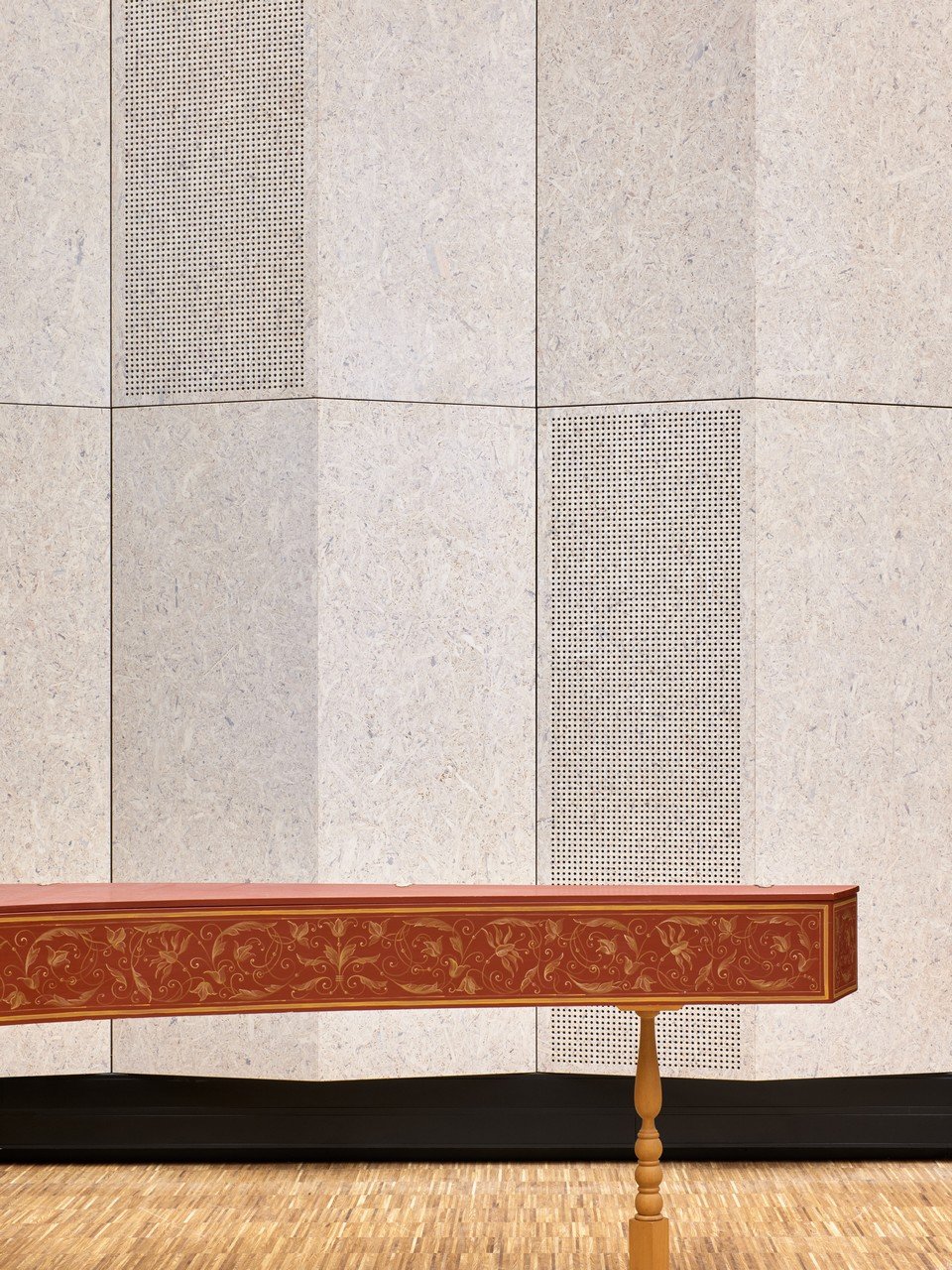
White OSB interior cladding panels bring the desired roughness to the look of a classical music hall but also maintain a sense of style and solemnity.
For the white OSB panels, the right colour was found quickly, but with the black panels, it was more challenging to find the right shade. In addition, the shades also had to be approved by the user community involved in the project.
The recording studio, located in the basement, was a challenging solution in the sense that there is no natural light in the space. We didn't want to make the studio dark, but not too white and clean either.
"We wanted the end result to be something natural and bold. We ended up using colour and now each of the eight rooms in the studio is a different colour! Users can choose the space that suits their music or even their mood," says Virtanen.
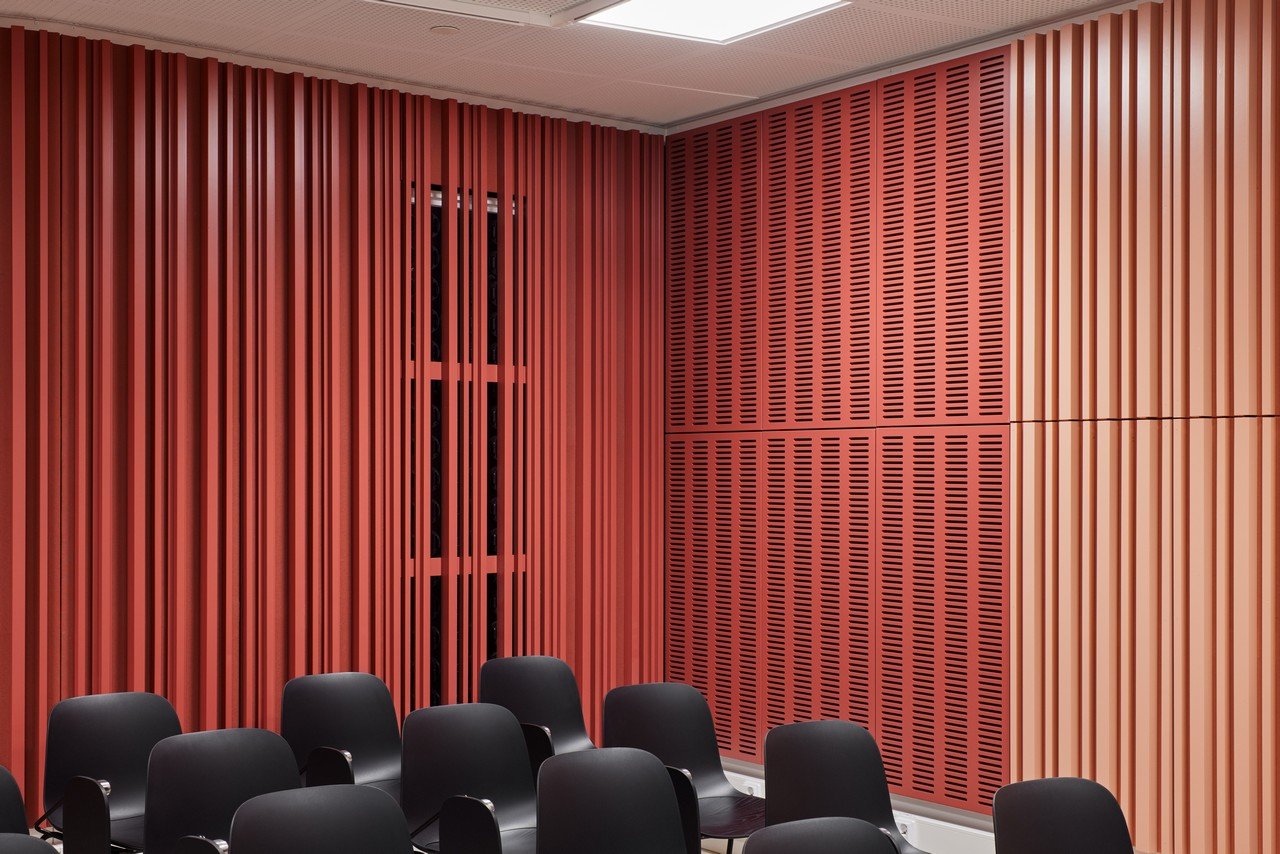
The ArborLine lath elements in the basement recording studios are fire-resistant.
The desired atmosphere was successfully achieved in both the rehearsal rooms and the recording studio. The white OSB panels gave the classical music rehearsal room and the black OSB panels gave the amplified music room the desired crispness, but also a certain solemnity. ArborLine lath elements with different coloured backing fabrics worked well as part of the recording studio's characterful solution.
Arabia135 is a key part of the history of Finnish design
The rise of the Arabia135 district as a key part of the history of Finnish design and industrialisation began with a small red-brick Arabia ceramics factory. The first buildings of the ceramics factory stood on a wasteland by the sea. The factory district grew rapidly in the early 1900s and by the end of the 1940s the Arabia factory had become the largest ceramics factory in the world. The same red brick buildings from this period still remain in the district and are now protected.
The journey of the Arabia135 district from the 1870s to the present day has been part of the history of Finnish design. Along the way, buildings have been built, demolished, repaired, and renovated to suit new users and needs. The story of this significant quarter continues and a new history is being written. The Soiva building, home to the Metropolia University of Applied Sciences and the Pop & Jazz Conservatory, is one part of the Arabia135 block's magnificent future.
If you need unique or demanding solutions for your project, contact our architect service. Puucomp Architect Service helps you find the best technical solutions for your ideas – even ones that have never been done before. We offer you our robust technical construction expertise and help you identify the best surface materials, colors, and solutions. You can also contact us when you are just developing your designs.
